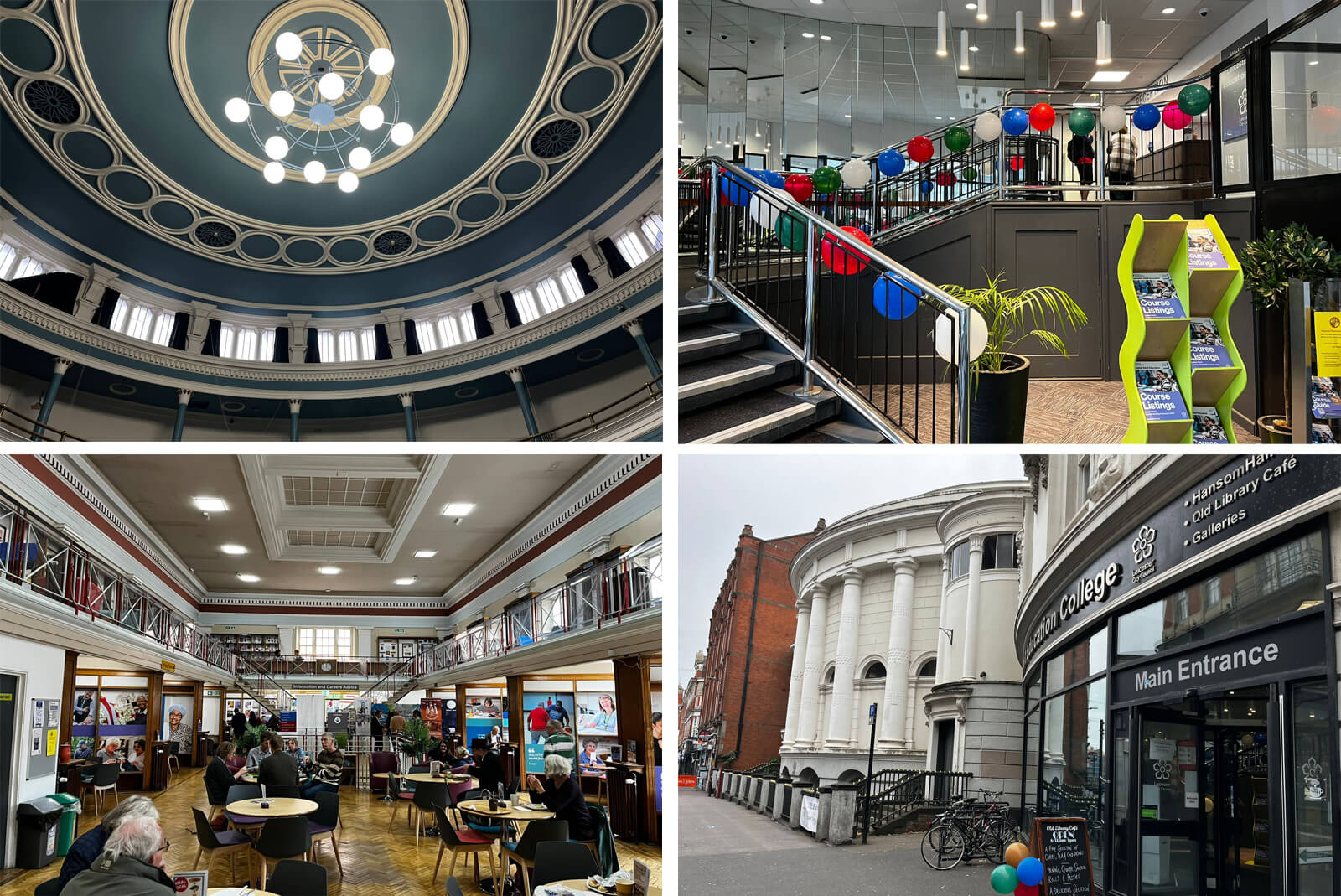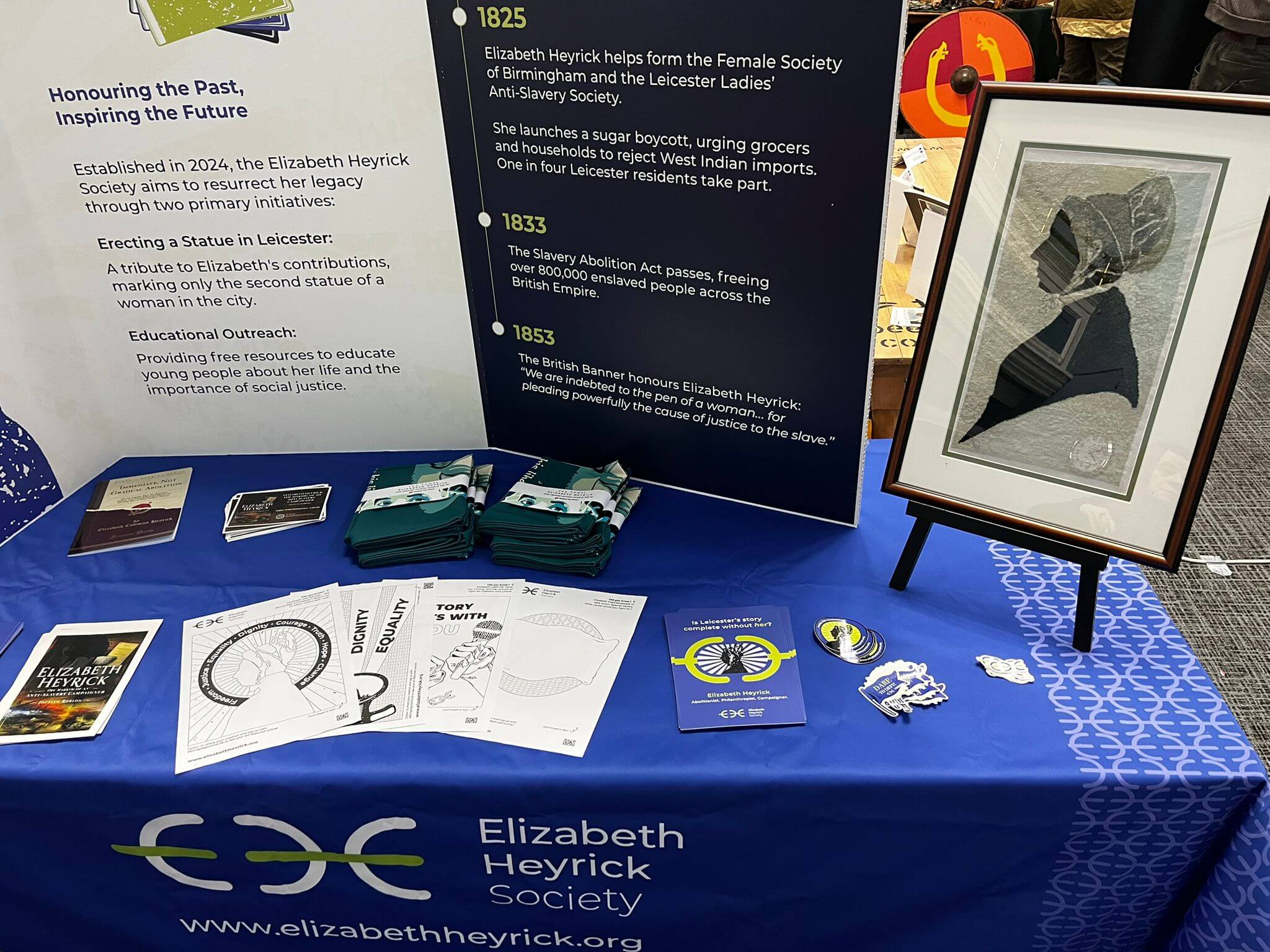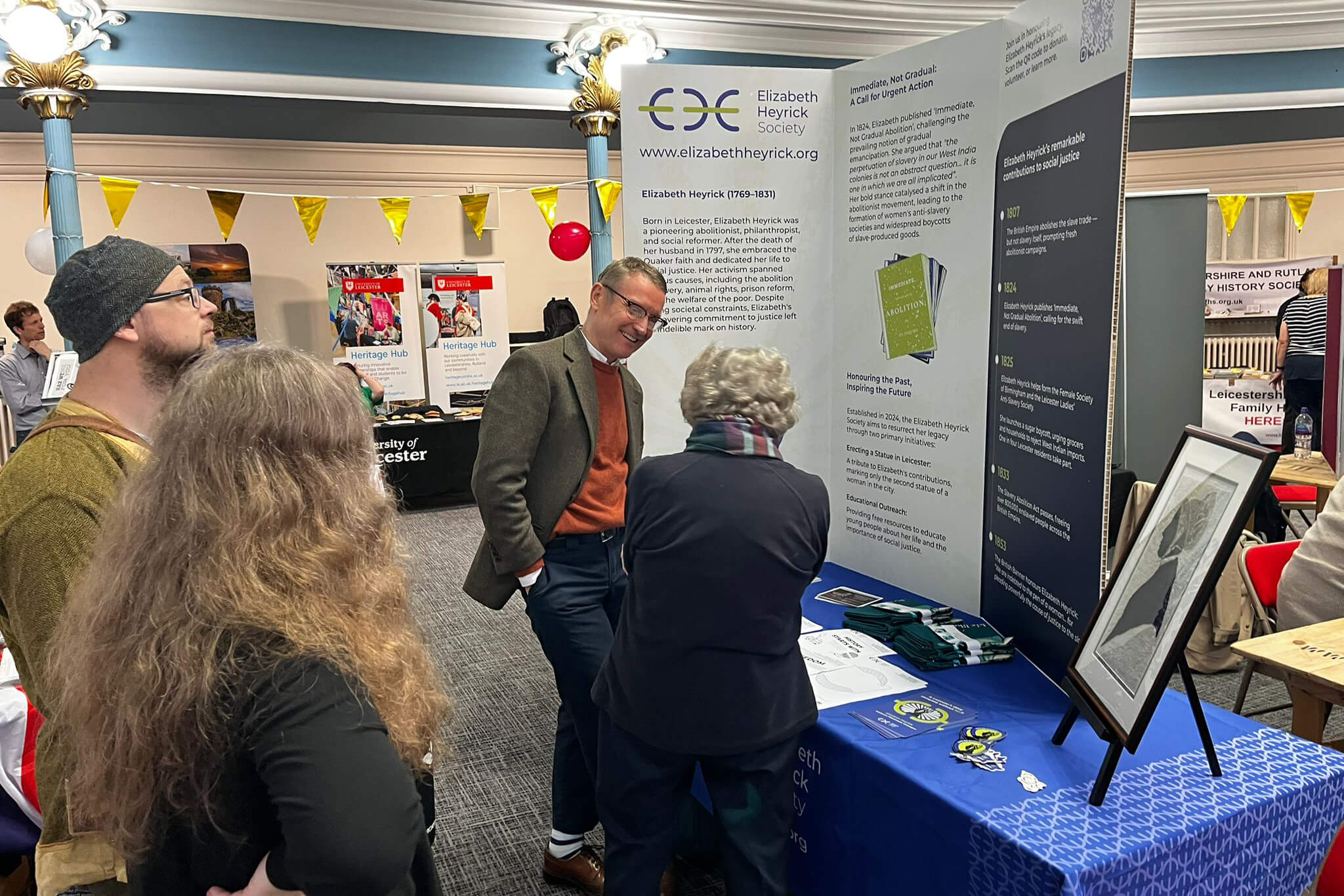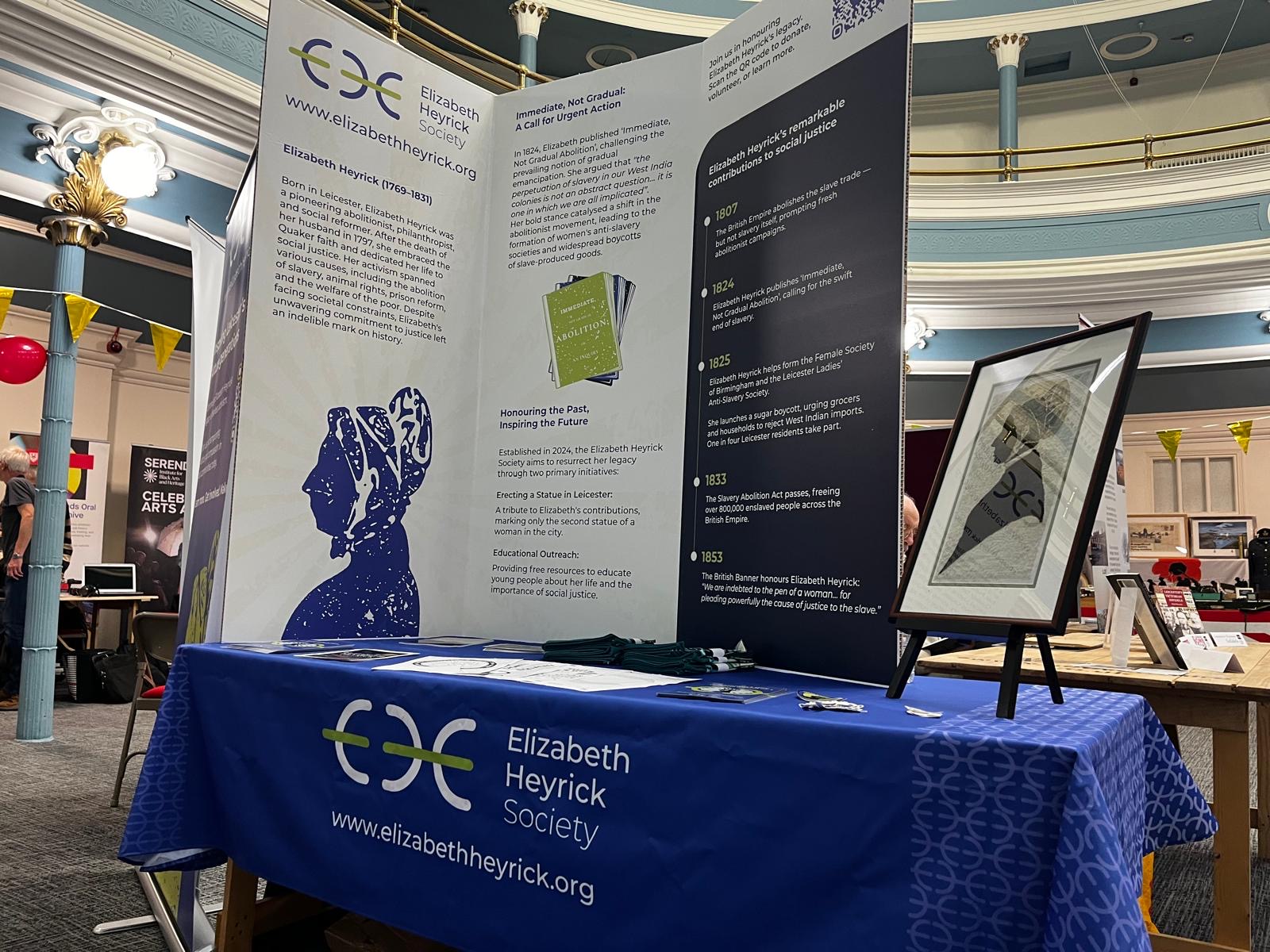The Elizabeth Heyrick Society would like to thank the Documentary Media Centre for hosting the Saturday Heritage Fair at the Leicester Adult Education College on 11 October 2025.
The fair was in the Grade II listed Hansom Hall, designed by Joseph Hansom, inventor of the Hansom Cab. There was also a link to Elizabeth Heyrick as Frederick Douglass gave a talk in the neighbouring room, now a café, where he mentioned her abolition campaigns.

Along with a range of stalls from organisations such as Serendipity, the Leicester Literary and Philosophical Society, the Secular Hall, Visit Leicester, the British Legion and others, Ken Ogborn took on the challenge of becoming Arthur Wakerley, architect who designed Leicester’s Turkey Café, for the event, mixing with guests and talking about Wakerley’s life. There were also talks throughout the day including Colin Hyde on using audio archives, the Afghan Language and Research Café, the Centre of Ethnic Health Research, Megg Nicol on Lawrence Wright, a Leicester composer who founded “Melody Maker” in 1926, David Humberston on St George’s Church in Ypres, a premiere screening of Qadir’s new documentary, Room 25, Tom Wilson the St Philips Centre Lottery Funded project Memories of Living Well together.

The Elizabeth Heyrick Society had a stall and throughout the day trustees Joshua Thorpe, Emma Lee and Susan Pares had chance to talk to visitors about Elizabeth Heyrick and the society’s aims. Visitors learnt that the society aims to produce educational materials about Elizabeth Heyrick and fundraise for a statue in recognition of her achievements in campaigning for the abolition of slavery. The stall had leaflets, our upright banner, an upright timeline with key dates from Elizabeth Heyrick’s life, her pamphlet “Immediate, not Gradual, Abolition”, colouring sheets and stickers for children and an embroidery of Elizabeth Heyrick’s silhouette. We also had some tea towels from The Radical Tea Towel Company featuring Elizabeth Heyrick and sold some on the day.
Visitors’ questions included locations relevant to Elizabeth Heyrick’s life, where the statue might be placed, how she campaigned and whether she had any links with the Herrick family. There was support for the idea of bringing Elizabeth Heyrick's achievements back into prominence and for erecting a further statue to a woman in Leicester. Trustees had chance to speak with each visitor to the stall individually and had time to answer questions.
It was good to see there was broad support for a statue, and support for educational materials for schoolchildren to learn more about one of Leicester’s unsung, but modest, heroines.





